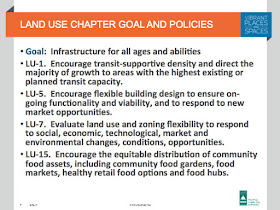 |
| [7-yr-old and 91-yr-old, hit by cars on the same day this month.] |
(Yes, you read that right.
That means, that I drive 30-35 miles per hour on Cretin Avenue or West 7th
Street, for example. Or below 30 on my own George Street.)
As you can imagine, thanks to our too-wide and too-forgiving
city streets, I almost always find someone riding my bumper.
The other day, driving around the West 7th Street area it
happened again. I’ve gotten kind of used
to tailgating at this point, and I ignore the social pressure of the car behind me. (Or "the flow", as LarsChristiensen once called it.) It’s rather a mild
annoyance, less annoying than when you’re bicycling down Rice Street and
someone throws their garbage at you, but about equally annoying as the construction signsplaced in the middle of the bike lane on the Wabasha Bridge.
At any rate, I was surprised the other day on West 7th
Street when I caught a glimpse of the tailgating driver: it was a the
proverbial little old lady, peeking over the steering wheel, hair as pure white
as an audience at a Trump rally.
I shouldn’t have been surprised, I suppose, but I found the
sight depressing. In Saint Paul, even the little old ladies are speeding as fast as
possible through the neighborhoods.
One of the best bandwagons that Saint Paul ever jumped upon
was the Gil Peñalosa “8-80 movement”, a call-to-action for cities to take
street design seriously, and to focus attention on people at the youngest and
oldest parts of the aging and mobility spectrum. Peñalosa’s key argument is
that, if we design streets where 8-year-olds and 80-year-olds can safely walk,
bike, and get around, then we have a city that will work for everyone.
That’s why it’s frustrating to see the proverbial octogenarian speeding, driving dangerously, and riding my ass. We’ve created roads and an entire urban landscape that revolves around driving, all throughout one's life from 16 up to age 80. But I worry about a future
that combines aging, diminished perception, and our
drive-everywhere culture with attempts to promote active living.
Designing streets that allow people with a wide range of capacities to drive everywhere comes at a cost. If we make it easy for a distracted
teenager or mostly-deaf grandfather to speed around, it makes it
impossible for your 10-year-old kid or your great aunt to walk to the store.
The same wide streets, big parking lots, and turn lanes designed for tailgating make it all-but-impossible to cross the street. In short, streets that are forgiving for “16-to-80 drivers”
come at the expense of “8-80 cities.”
 To make matters worse, often during street design debates, the proverbial “little old lady” is raised up as an excuse for not building safer
crosswalks or keeping parking spots. This happened during the Ramsey County debate around a 4-3 road diet on Dale Street, for example. From what I heard about the conversation, the "little old ladies" going to church needed once-a-week parking, so the
county didn’t improve a deadly 4-lane death road through a walkable neighborhood.
Instead of a safer road that
would have had slower speeds and fewer conflict points, we kept the one
without safer intersections and without shorter crossing distances.
To make matters worse, often during street design debates, the proverbial “little old lady” is raised up as an excuse for not building safer
crosswalks or keeping parking spots. This happened during the Ramsey County debate around a 4-3 road diet on Dale Street, for example. From what I heard about the conversation, the "little old ladies" going to church needed once-a-week parking, so the
county didn’t improve a deadly 4-lane death road through a walkable neighborhood.
Instead of a safer road that
would have had slower speeds and fewer conflict points, we kept the one
without safer intersections and without shorter crossing distances.
Especially given how important staying active is to staying healthy, particularly as we get older, can’t there be another solution?
I am really interested in hearing from older Saint Paul folk about whether they see this as a problem, and what the solution might be. In Saint Paul’s ongoing comprehensive planning process, there are a
bunch of ideas for how to adapt the city over the next decade to be a better
fit for older people.
Note: I learned that “aging in place” is no longer the best
way to phrase this; “aging in community” is better, because it gets at a more
active, social, and vital sense of what it means to be aging.
Here are a few slides from a recent presentation to the
Planning Commission with some of the idea from the draft chapters of the
upcoming Comprehensive Plan. (See also, a recent Saint Paul study entitled "Reframing Aging: Opportunities for Aging in Community" that covers all of this!)
To me, the transportation components are
particularly important. Can Saint Paul figure out a way to create streets that
allow people to walk safely, no matter their age? Can we change our assumptions
about driving at the same time? Or is there no way to reconcile “8-80 cities”
with “16-80 drivers”?








No comments:
Post a Comment